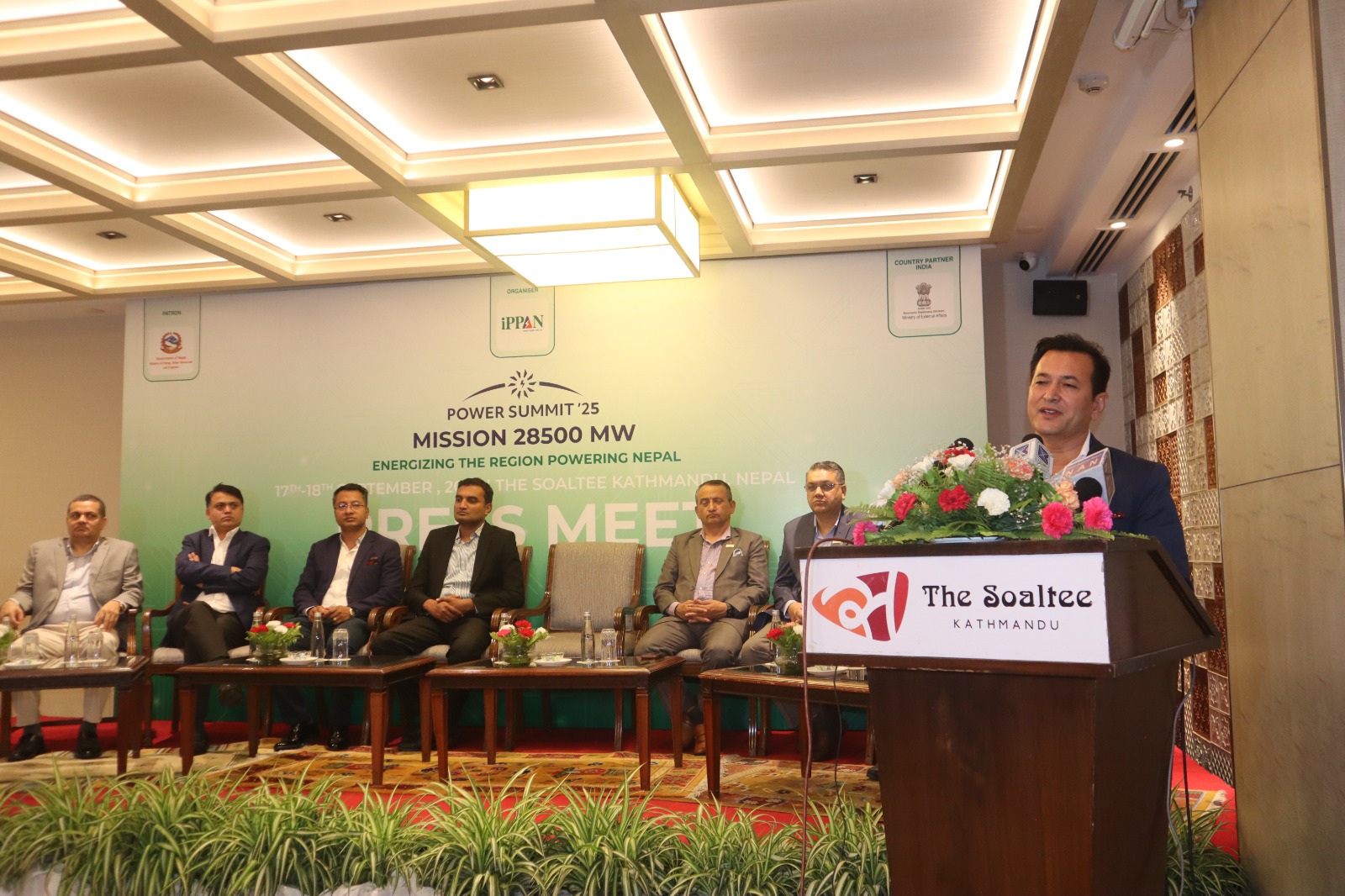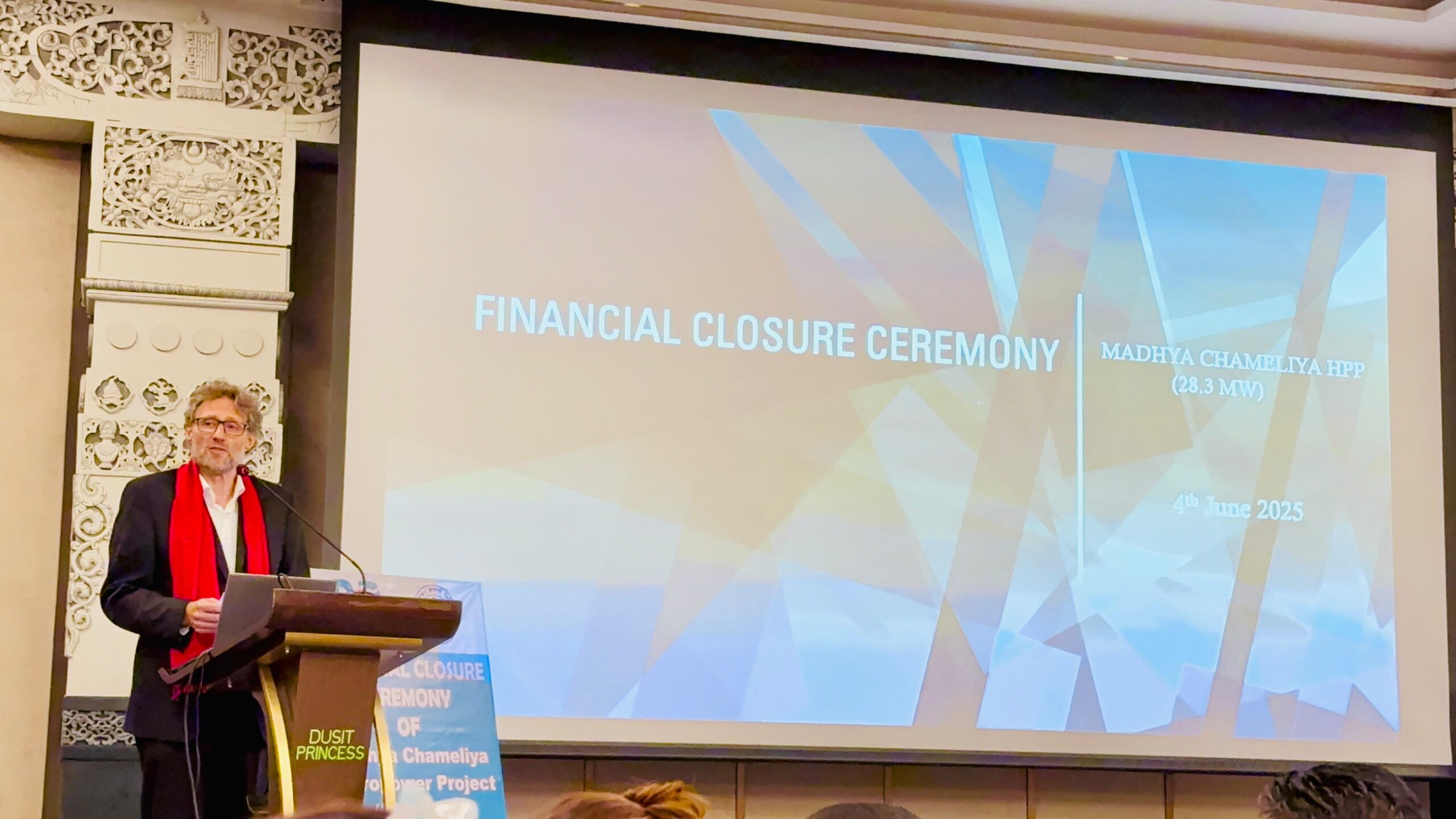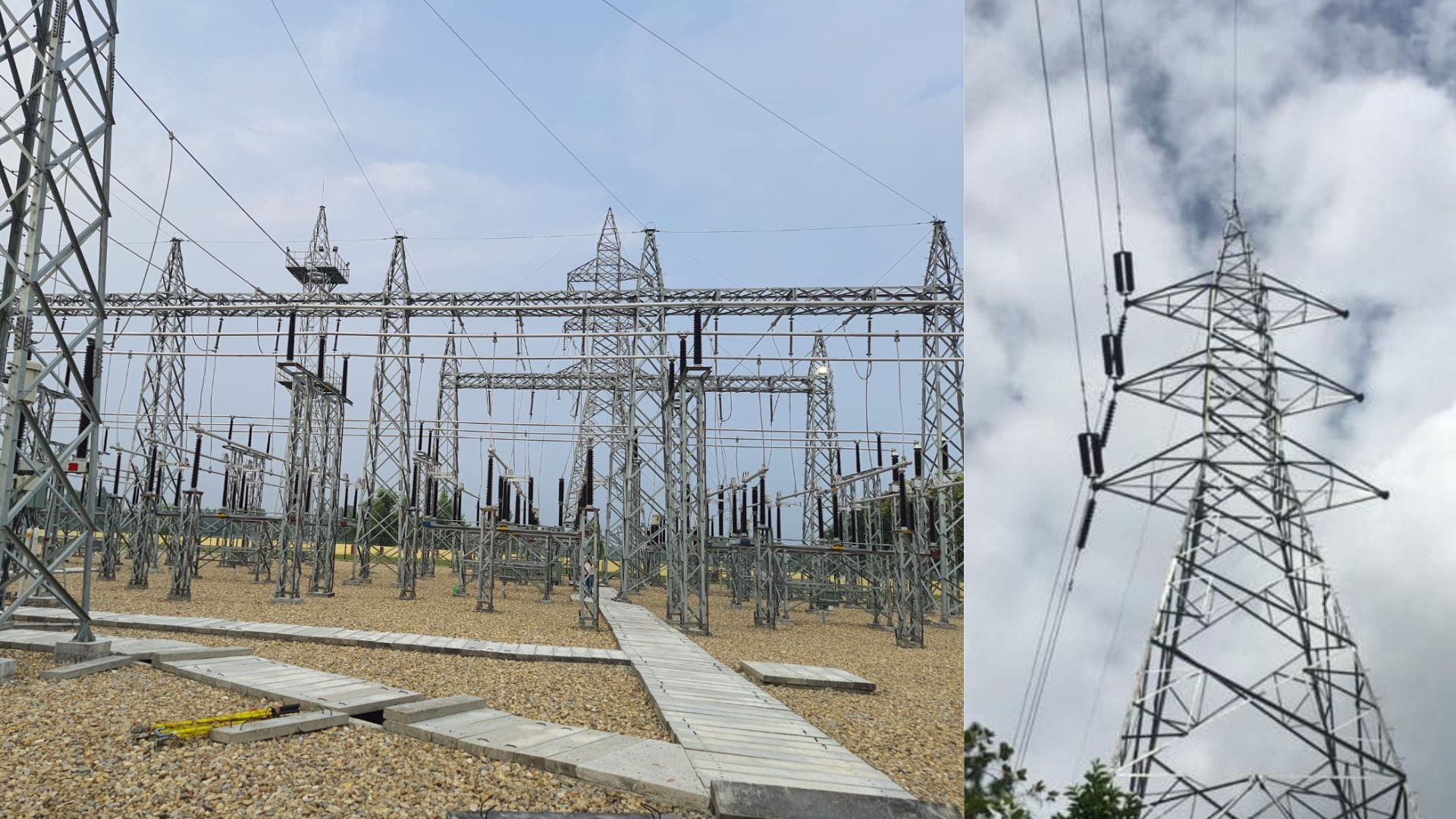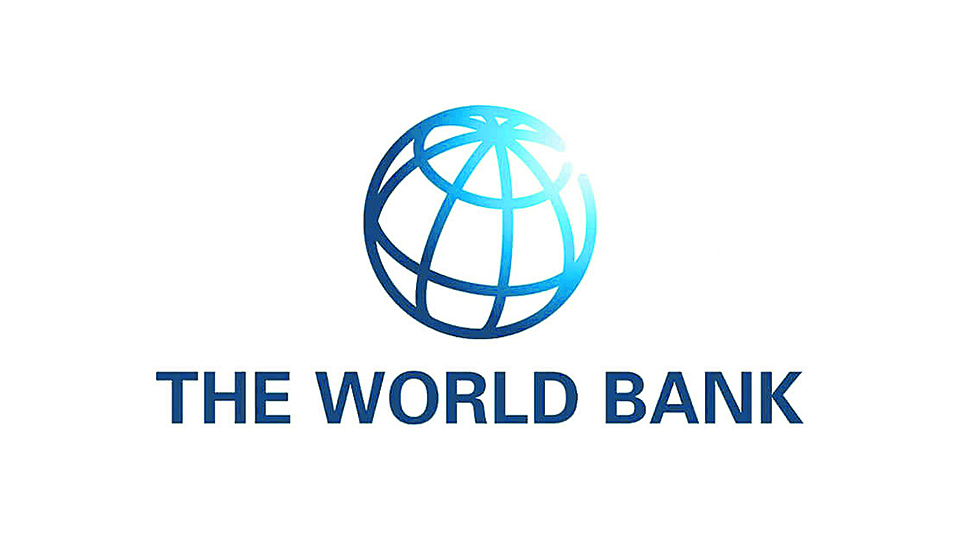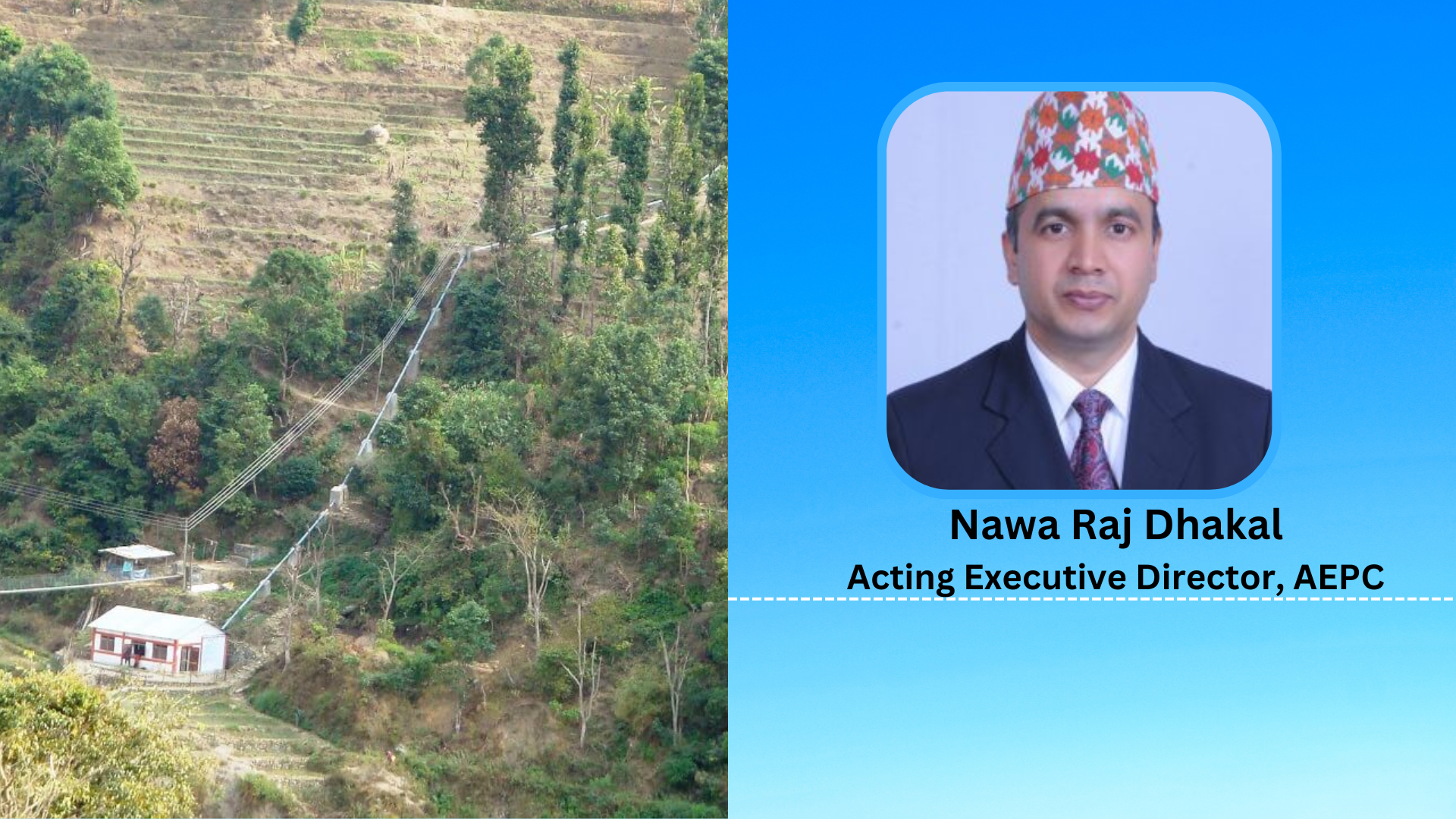
Alternative Energy Promotion Centre (AEPC) is the government of Nepal’s focal agency on RE and EE. We have been collaborating with various partners for delivering decentralized renewable energy systems in Nepal. Given Nepal’s complex mountainous terrain and scattered settlements in the rural areas, the decentralized system that includes small-scale renewable energy resources mainly micro and mini hydropower, solar energy, wind energy, and bioenergy play a huge role in the nation’s sustainable energy transition.
We have made significant progress in increasing access to electricity in the last decade. The off-grid coverage has been significant at rural and remote settings which are being overlapped by the expanding grid. Currently, more than 95% of the households of the country have been electrified – 91% from grid and 4% from off-grid.
A brief on the topic of the day: Energy transition refers to the process of shifting towards clean energy sources for replacing fossil fuels. It broadly covers the production of energy from renewable energy resources, increasing the energy efficiency during production and use of energy, as well as the adoption of clean energy pathways in various end-uses of energy such as transport, cooking, and industrial processes.
The energy transition is a must for achieving the goal of the Paris Agreement – “to limit the global warming to well below 2 degrees Celsius, preferably below 1.5 degrees Celsius, compared to pre-industrial levels”.
In line with the requirements of the Paris Agreement, Nepal submitted its Second Nationally Determined Contribution (Second NDC) in December 2020 depicting the ambitious targets for the next decade for clean energy transition, to mitigate emissions, and to increase the resilience of vulnerable communities.
The key energy sector targets of the 2nd NDC include,
• By 2030, expand clean energy generation to 15,000 MW, of which 5-10 % will be generated from mini and micro-hydro power, solar, wind, and bio-energy.
• In transportation, under the sales of electric vehicles, increase sales of e-vehicles to cover 90% of all private passenger vehicle sales and 60% of all four-wheeler public passenger vehicle sales by 2030.
• In addition, residential cooking has been prioritized with the target set at 25% of households using electric stoves by 2030 along with ambitious targets for household and large-scale biogas plants.
Furthermore, Nepal’s “Long Term Strategy for Net-Zero Emissions” aims to accelerate climate actions with the goal to achieve net zero emissions by 2045. It is evident that in terms of Nepal’s a clean energy transition plans and targets, Nepal’s energy sector is widely recognized as being the key driver to the nation’s future economic growth.
The countries in the region namely Nepal, Indian and Bangladesh have already initiated bilateral cooperation for power trade and the discussions are underway to enter into trilateral/multilateral cooperation. Such cooperation among the countries will be instrumental in making the regional power trade possible.
Nepal’s abundant hydro resources supply the majority of the country’s electricity demand. However, the role of decentralized renewable energy resources (mainly micro and mini hydro, solar energy, wind energy, and bioenergy) particularly for electricity and clean cooking demand of rural and remote areas of the country remains critical.
We have made significant progress in increasing access to electricity in the last decade. The off-grid coverage has been significant in rural and remote settings which are being overlapped by the expanding grid. Currently, more than 95% of the households of the country have been electrified – 91% from the grid and 4% from off-grid. At one point in time, off-grid coverage of electricity was up to 20% which is now reduced to 4% with the gradual expansion of and overlap by the national grid.
We aim to achieve universal (100%) electricity access by 2024. Residential cooking is dominated by the use of traditional fuel sources followed by LPG. The dependence on fossil fuels is the major challenge since it is 100% imported, which has not only widened the trade deficit but has also made Nepal prone to the risk of energy security.
AEPC has been providing modern energy solutions through renewable energy technologies targeting rural and remote areas of Nepal while creating employment opportunities and enhancing the livelihoods of households. We have been working together with various stakeholders including development partners, the private sector, subnational governments, civil society organizations, academia, and media for accelerated propagation of decentralized renewable energy solutions. AEPC has installed more than 84 MW of decentralized electricity, power to education, health, and agriculture, and clean cooking solutions reaching more than 3.6 million households since its establishment.
The countries in tWe need to invest more in capacity building to overcome the issue of technical infrastructure. Another important aspect of implementing a decentralized renewable energy system is the financing gap and the need for the proliferation of public-private partnerships.
The countries in the region namely Nepal, India, and Bangladesh have already initiated bilateral cooperation for power trade and discussions are underway to enter into trilateral/multilateral cooperation. Such cooperation among the countries will be instrumental in making the regional power trade possible. Additionally, Nepal, by tapping the tremendous clean energy potential through hydropower and solar, can also help India, Bangladesh, and other countries in the region to reduce their dependence on fossil-fuel-based energy by supplying clean electricity.
Still decentralized renewable energy systems are very important to ensure universal access to modern energy and to make the energy system resilient, especially in the rural areas of the countries represented here today. However, there are multiple challenges that need to be addressed and I believe that CSO and Media have a vital role to play in the areas of strengthening networking, creating awareness, and forging a sustainable partnership among the key stakeholders:
One of the key challenges in implementing a decentralized renewable energy system is the lack of infrastructure and technical expertise in the rural and remote areas of Nepal. We need to invest more in capacity building to overcome the issue of technical infrastructure. Another important aspect of implementing a decentralized renewable energy system is the financing gap and the need for the proliferation of public-private partnerships.
While talking about sustainable and resilient energy systems, we need to keep in mind affordable and reliable energy services to the people. And, at the same time, need to think about attracting investments in the sector from small and big investors. We need to create suitable business models that benefit both the investors and the local communities.
Finally, it is important to ensure that the benefits of a decentralized renewable energy system are inclusive and equitable. This means ensuring that vulnerable and marginalized communities have access to energy and that the benefits of this system are distributed fairly. It is only through a just and inclusive energy transition that we can truly create a sustainable future for all.
(Dhakal is the Acting Executive Director of AEPC. A brief version of his keynote speech on “Sustainable Energy Transitions in the Ganges River Basin: Implementing a decentralized renewable energy system in Nepal” Organized by: IUCN, The Asia Foundation, and NEFEJ)


